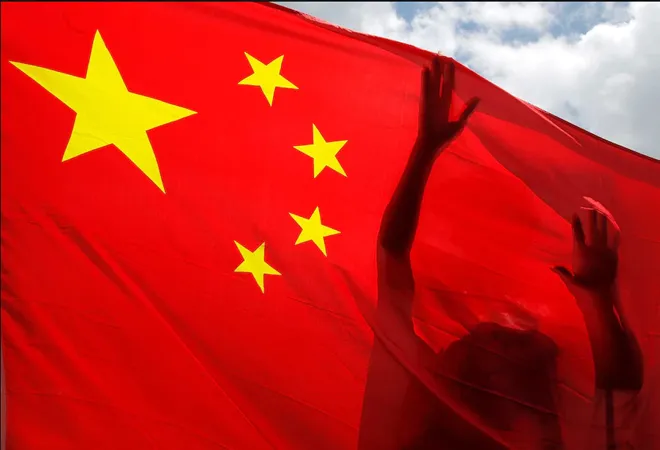In the waning months of 2024, China has been rocked by an unprecedented series of violent incidents that have sent shockwaves through its society and exposed deep fissures beneath the surface of the world’s second-largest economy. The most devastating of these occurred in Zhuhai on November 11, where a 62-year-old man, reportedly distraught over a divorce settlement, drove his vehicle into a crowded sports center, claiming 35 lives and severely injuring 43 others. Just five days later, in Wuxi, a former student’s stabbing rampage at a vocational college left eight dead and 17 injured – all because he was denied a graduation certificate and failed an exam.
These incidents, however, represent merely the tip of a much larger iceberg. A disturbing chronology reveals the scale of the crisis: October witnessed multiple attacks, including a knife assault near a prestigious Beijing primary school; September saw deadly incidents in Shanghai and Shenzhen; and the summer months were marked by a series of vehicular attacks and stabbings across multiple provinces. This pattern of violence, unprecedented in its frequency and intensity, suggests a fundamental breakdown in social coping mechanisms within Chinese society.
The profile of these attacks reveals a troubling commonality. They are often perpetrated by individuals who feel marginalized, disenfranchised, or betrayed by the system. In Guangzhou, a man with massive debts rammed his car into crowds to “vent personal emotions.” In Shanghai, a dispute over finances led to a deadly knife attack in a suburban supermarket. These personal grievances, transformed into public violence, point to a society where traditional methods of conflict resolution and social support are failing.
The Chinese Communist Party’s response to this crisis has been characteristic of its governance philosophy that is intensified control and surveillance. Following the Zhuhai tragedy, President Xi Jinping’s directives to the Ministry of Public Security emphasized not just punishment but prevention through enhanced monitoring. The subsequent implementation of the “Fengqiao Experience,” “Chaoyang Masses,” and “Red Maple Volunteer Guards” represents a multi-layered approach to social control, mobilizing citizens to monitor their neighbors and report potential threats.
However, this emphasis on surveillance and control may be exacerbating the very pressures it seeks to contain. The recent phenomenon of night cycling by college students across major cities like Beijing, Nanjing, Wuhan, and Zhengzhou provides a compelling illustration. What began as a spontaneous activity among students in Henan has evolved into a symbolic act of resistance against suffocating social controls. The authorities’ response – implementing strict controls on student movement and requiring temporary exit passes – demonstrates how increased restriction has become the default response to any sign of social unrest.
The youth’s frustration is particularly telling. China’s young generation faces unprecedented challenges which is a highly competitive job market, skyrocketing living costs, and intense pressure to succeed in a system that seems increasingly stacked against them. The strict censorship on social media platforms like Weibo and Douyin, combined with constant surveillance by authorities and school counselors, creates an environment where legitimate grievances have no outlet for expression.
The pattern of these violent incidents reveals another significant aspect: the targeting of symbolic locations. Educational institutions, from primary schools to universities, have become frequent targets. The attacks in Beijing’s Haidian district, Guangzhou’s Tianhe Primary School, and the Suzhou Japanese school bus incident suggest that perpetrators are not just seeking to cause harm but to strike at institutions that represent social order and future prosperity.
The geographical distribution of these incidents is equally significant. From coastal economic powerhouses like Shanghai and Guangzhou to inland cities like Xi’an and Chengdu, the violence transcends regional economic disparities. This widespread distribution suggests that the underlying social tensions are not limited to specific economic conditions but reflect broader systemic issues within Chinese society.
The choice of weapons – primarily vehicles and knives – speaks to the spontaneous and desperate nature of these acts. Despite China’s strict gun control laws, individuals at their breaking point are weaponizing everyday objects, making traditional security measures increasingly ineffective. This adaptation highlights the difficulty of preventing such attacks through conventional means of control and surveillance.
The state’s emphasis on resolving conflicts at the grassroots level through increased surveillance mechanisms represents a fundamental misunderstanding of the problem. While these measures might provide temporary security, they fail to address the root causes: the intense pressure of social expectations, limited opportunities for expression, and the rapid erosion of traditional support systems in an increasingly atomized society.
The recent surge in student activism, exemplified by the night cycling movement, represents a new dimension of social resistance. Unlike previous generations, today’s Chinese youth are finding innovative ways to express their discontent while avoiding direct confrontation with authorities. The fact that such a simple activity as group cycling has prompted such a severe response from authorities indicates the state’s deep-seated concerns about any form of collective action, however benign.
As China continues its trajectory of development and modernization, these violent incidents serve as urgent warning signs of a society under immense strain. The challenge for Chinese leadership lies not just in preventing future attacks but in addressing the fundamental social issues that drive individuals to such desperate acts. The current approach of enhanced surveillance and control, while potentially effective in the short term, may be creating a pressure cooker effect that could lead to more severe social disruptions in the future.
The wave of violence sweeping across China in 2024 is more than a law enforcement challenge. It is a symptom of deep-seated social malaise that requires comprehensive solutions beyond increased security measures. Until the fundamental issues of social pressure, limited expression, and economic inequality are addressed, the tension between state control and social expression will likely continue to manifest in increasingly concerning ways.

